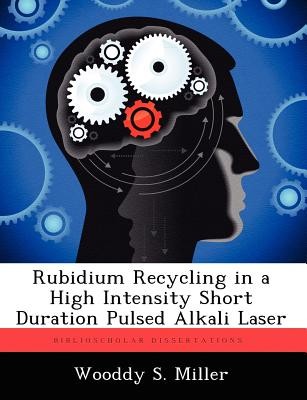
- We will send in 10–14 business days.
- Author: Wooddy S Miller
- Publisher: BiblioScholar
- Year: 2012
- Pages: 60
- ISBN-10: 1249588227
- ISBN-13: 9781249588221
- Format: 18.9 x 24.6 x 0.3 cm, softcover
- Language: English
- SAVE -10% with code: EXTRA
Rubidium Recycling in a High Intensity Short Duration Pulsed Alkali Laser (e-book) (used book) | bookbook.eu
Reviews
Description
Laser induced fluorescence was used to study how pump pulse duration and alkali recycle time effects maximum power output in a Diode Pumped Alkali Laser (DPAL) system. A high intensity short pulsed pump source was used to excited rubidium atoms inside a DPAL-type laser. The maximum output power of the laser showed a strong dependence upon the temporal width of the pump pulse in addition to the input pump intensity. A linear relationship was observed between the maximum output power and the pulse width due to the effective lifetime of the excited state, defined as the time it takes for the alkali to be excited to the 2P3/2, relax down to the 2P1/2 state, and finally lase. This effective lifetime, calculated to be 0.139 ns, allowed for a calculation of the number of times each alkali atom in the pump volume could be used for lasing during a pulse. The number of recycles ranged from approximately 15 during the shorter 2 ns pulses up to 50+ times during the 7-8 ns pulses. The maximum output of the system scaled linearly with the number of cycles available.
EXTRA 10 % discount with code: EXTRA
The promotion ends in 19d.05:49:17
The discount code is valid when purchasing from 10 €. Discounts do not stack.
- Author: Wooddy S Miller
- Publisher: BiblioScholar
- Year: 2012
- Pages: 60
- ISBN-10: 1249588227
- ISBN-13: 9781249588221
- Format: 18.9 x 24.6 x 0.3 cm, softcover
- Language: English English
Laser induced fluorescence was used to study how pump pulse duration and alkali recycle time effects maximum power output in a Diode Pumped Alkali Laser (DPAL) system. A high intensity short pulsed pump source was used to excited rubidium atoms inside a DPAL-type laser. The maximum output power of the laser showed a strong dependence upon the temporal width of the pump pulse in addition to the input pump intensity. A linear relationship was observed between the maximum output power and the pulse width due to the effective lifetime of the excited state, defined as the time it takes for the alkali to be excited to the 2P3/2, relax down to the 2P1/2 state, and finally lase. This effective lifetime, calculated to be 0.139 ns, allowed for a calculation of the number of times each alkali atom in the pump volume could be used for lasing during a pulse. The number of recycles ranged from approximately 15 during the shorter 2 ns pulses up to 50+ times during the 7-8 ns pulses. The maximum output of the system scaled linearly with the number of cycles available.


Reviews